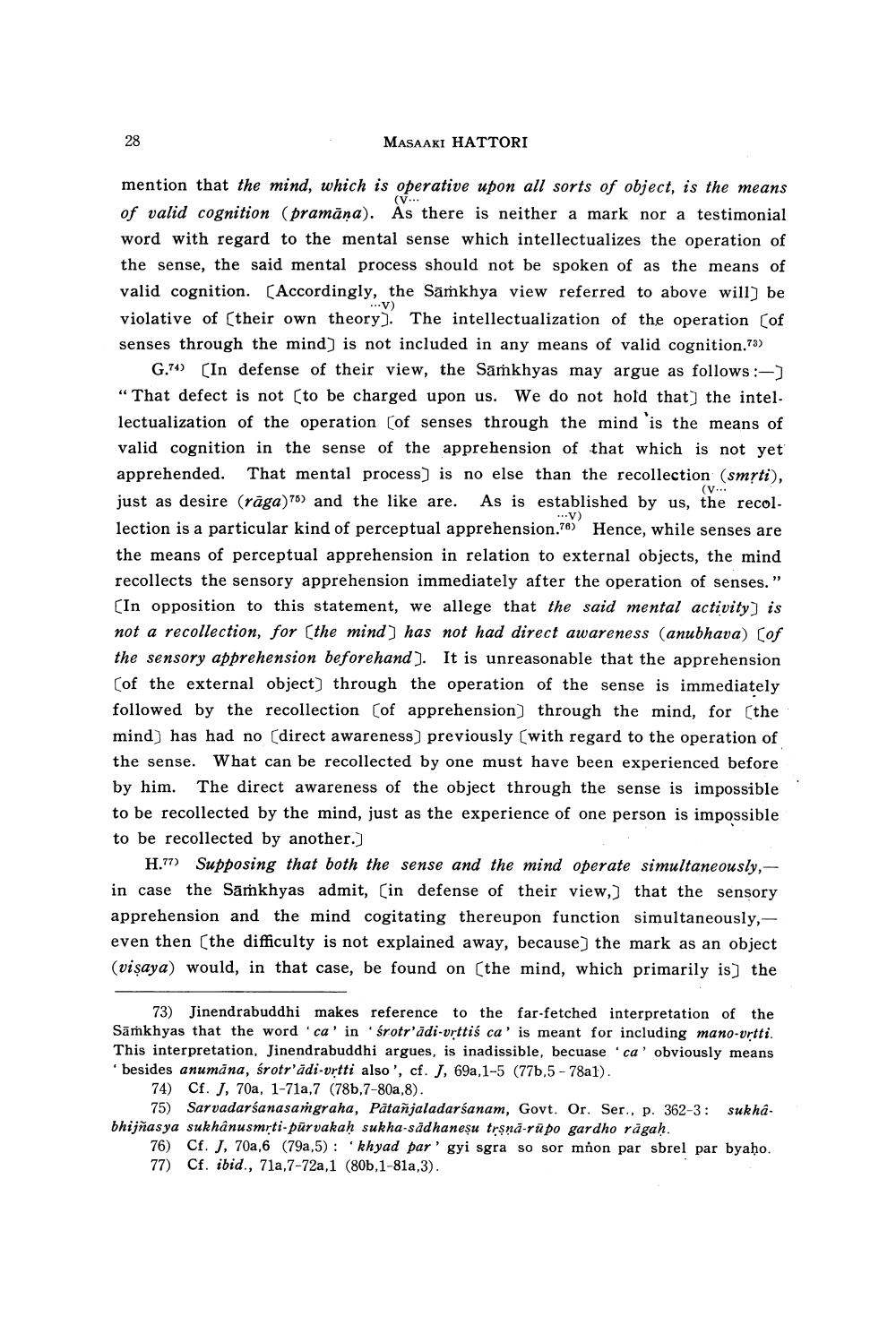________________
MASAAKI HATTORI
mention that the mind, which is operative upon all sorts of object, is the means of valid cognition (pramāna). As there is neither a mark nor a testimonial word with regard to the mental sense which intellectualizes the operation of the sense, the said mental process should not be spoken of as the means of valid cognition. (Accordingly, the Sāṁkhya view referred to above will) be violative of their own theory). The intellectualization of the operation Cof senses through the mind) is not included in any means of valid cognition.73)
G.71) (In defense of their view, the Samkhyas may argue as follows :-) "That defect is not (to be charged upon us. We do not hold that the intel. lectualization of the operation of senses through the mind is the means of valid cognition in the sense of the apprehension of that which is not yet apprehended. That mental process) is no else than the recollection (smrti), just as desire (râga)76) and the like are. As is established by us, the recol. lection is a particular kind of perceptual apprehension.76) Hence, while senses are the means of perceptual apprehension in relation to external objects, the mind recollects the sensory apprehension immediately after the operation of senses." (In opposition to this statement, we allege that the said mental activity) is not a recollection, for the mind) has not had direct awareness (anubhava) Cof the sensory apprehension beforehand). It is unreasonable that the apprehension
of the external object) through the operation of the sense is immediately followed by the recollection of apprehension) through the mind, for the mind) has had no (direct awareness) previously with regard to the operation of the sense. What can be recollected by one must have been experienced before by him. The direct awareness of the object through the sense is impossible to be recollected by the mind, just as the experience of one person is impossible to be recollected by another.)
H.77) Supposing that both the sense and the mind operate simultaneously, in case the Samkhyas admit, (in defense of their view,) that the sensory apprehension and the mind cogitating thereupon function simultaneously,even then (the difficulty is not explained away, because) the mark as an object (visaya) would, in that case, be found on the mind, which primarily is) the
73) Jinendrabuddhi makes reference to the far-fetched interpretation of the Sāmkhyas that the word 'ca' in 'śrotr'adi-urttiś ca' is meant for including mano-vrtti. This interpretation, Jinendrabuddhi argues, is inadissible, becuase 'ca' obviously means besides anumana, śrotr'adi-vrtti also', cf. J, 69,1-5 (77b,5 - 78al).
74) Cf. J, 70a, 1-712,7 (786,7-80a,8).
75) Sar vadarśanasangraha, Patañjaladarśanam, Govt. Or. Ser. p. 362-3: sukhabhijñas ya sukhânusmrti-purvakah sukha-sädhanesu trsna-rūpo gardho ragaḥ
76) Cf. J, 70a, 6 (79a,5): 'khyad par' gyi sgra so sor míon par sbrel par byaho. 77) Cf. ibid., 710,7-72a,1 (80b,1-819,3).




